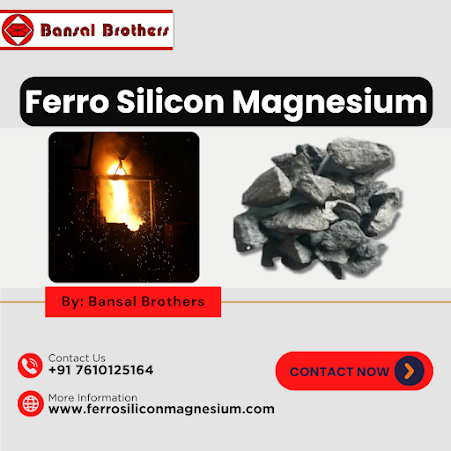Why Inoculant Wire Feeders Are Essential for Effective Ferro Silicon Magnesium Nodularisation
In the foundry and metallurgical industry, achieving high-quality ductile iron depends on a precise nodularisation process. One of the key elements in this process is the Inoculant Wire Feeder, which ensures the controlled addition of Ferro Silicon Magnesium (FeSiMg) to molten metal.
Foundries can enhance efficiency, maintain consistency, and reduce costs in the nodularisation process, resulting in superior casting quality. This article explores the importance of advanced feeding systems in achieving optimal results.
1. Precision in Ferro Silicon Magnesium Addition
The nodularisation process requires accurate and controlled additions of Ferro Silicon Magnesium (FeSiMg) to ensure proper graphite nodules formation in cast iron.
Manual or uncontrolled addition can lead to: * Inconsistent nodularisation * Excessive alloy consumption * Defects in casting
How Inoculant Wire Feeders Help:
1. Automate and precisely control the feeding rate of FeSiMg
2. Ensure uniform distribution in molten metal
3. Reduce the chances of over- or under-treatment
By maintaining accuracy, inoculant wire feeders enhance casting quality and reduce material wastage.
2. Improved Metallurgical Properties
Nodularisation with FeSiMg improves the mechanical strength, ductility, and toughness of cast iron. However, an uneven or excessive magnesium addition can cause defects like shrinkage and poor nodularity.
Inoculant Wire Feeders Ensure:
1. Consistent graphite nodule formation
2. Controlled magnesium recovery, preventing excess fading
3. Better mechanical properties in final castings
This makes inoculant wire feeders critical for high-performance iron casting.
3. Increased Process Efficiency & Cost Savings
Manual or bulk FeSiMg additions increase operational costs due to material loss and inconsistent results.
Inoculant wire feeders provide a cost-effective solution by:
1. Optimizing FeSiMg usage, reducing excess consumption
2. Lowering rejection rates due to improved nodularisation
3. Automating the process, reducing labor dependency
By improving efficiency, foundries can increase productivity while saving costs.
4. Reduced Magnesium Fading & Oxidation Losses
A major challenge in nodularisation is the fading effect, where magnesium content in molten metal decreases over time. This can lead to weak or incomplete nodularisation.
Inoculant Wire Feeders Help by:
1. Delivering FeSiMg steadily to maintain optimal magnesium levels
2. Reducing oxidation losses, ensuring higher nodularisation efficiency
3. Ensuring consistent metal treatment throughout the process
By preventing magnesium fading, wire feeders guarantee better casting results.
5. Enhanced Safety & Automation
Traditional methods of FeSiMg addition involve handling large quantities of alloys, leading to:
* Higher chances of splashing and worker injuries
* Uncontrolled reactions, posing risks in the foundry environment
With Automated Systems:
1. The automated system reduces manual handling
2. Precise alloy feeding minimizes uncontrolled reactions
3. Worker safety is significantly improved
This makes inoculant wire feeders a modern, safe, and reliable solution for foundries.
Conclusion
For foundries aiming to improve their nodularisation process, inoculant wire feeders are an essential investment.
They provide:
1. Accurate FeSiMg dosing for optimal nodularisation
2. Better mechanical properties in castings
3. Higher efficiency & lower material wastage
4. Minimized magnesium fading & oxidation losses
5. Enhanced worker safety & automation
By integrating inoculant wire feeders, foundries can achieve consistent, high-quality Ductile Iron with improved cost savings and operational efficiency.
Looking for the best inoculant wire feeders for your foundry? Explore advanced solutions for Ferro Silicon Magnesium nodularisation today!
InoculantWireFeeder, FerroSiliconMagnesium, DuctileIron


Comments
Post a Comment